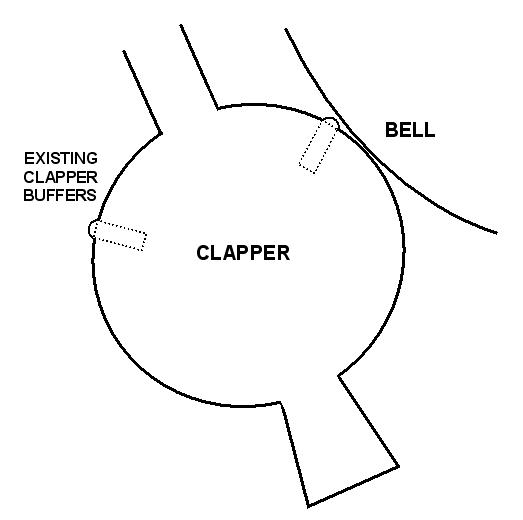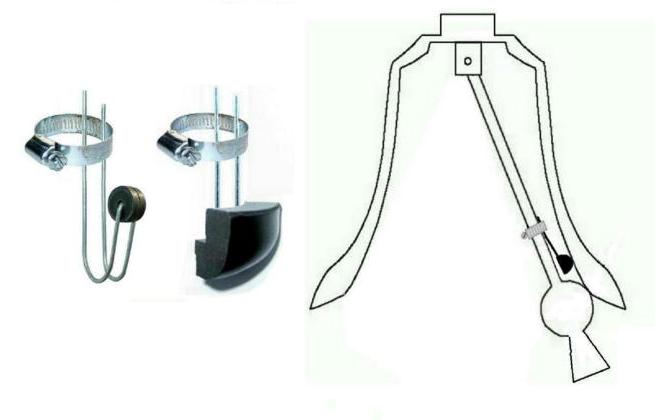Improving
the sound of the bells
An investigation into the varying sounds produced by the bells at
Goldhanger was been undertaken In 2008. The reasons for undertaking this
were...
o The Ellacombe Chimes produce
a quite different sound from the full circle ringing. The chimes are quieter
but have much longer ring decay times and are generally produce a less harsh
sound.
o When individual bells were
being put up for full circle ringing the harshness was very noticeable as the
bells came to rest in the up position.
o In comparison with the
sounds at other local towers, it was evident that some bells of a similar size
produce quite different sounds - some harsher, some sounding more dead
sounding.
o The cumulative effect on the
sound of all bells ringing together at full speed is less obvious, however when
the bells are all being lowered together, the change in tone and duration of
the collective ring when all the bells are partway down is very apparent and
perhaps the best demonstration of the phenomena.
It is well known that during full circle ringing, and for a proportion
of the bell wheel's 380 degree rotation, immediately after the clapper has
struck the bell, the clapper rests in contact with the bell in the up position
resulting in two effects:
The clapper momentarily
chatters and some harshness is generated.
Due to this time energy is
lost, resulting in a shorter ring decay and a more dead sounding bell.
However, at the beginning of the study it was not known why there was
so much variation in the phenomena between the different bells in the same
tower.
There were two approaches to the investigation: 1) a study the
relationship between the clappers and bells, and experiments with methods of
raising the clapper away from the bell surface. 2) consultations with local
experts and the study of relevant published material on the subject.
|
It was soon established
that several methods of reducing clapper chatter have been proposed in the
past, and one of the methods had in fact been implemented on some of the
bells at Goldhanger, probably 50 years ago. A small soft metal pad, probably
lead, was inserted near the worn striking areas on some clappers. These can
be felt by hand, but are not visible when the bells are in the down position
and the clappers are vertical. However, the devices are
worn and flattened and are only effective on one bell. This discovery meant
that the problem has been recognised in the past and was significantly severe
to justify a solution. |
|
|
As replacing the worn
parts would involve removing the clappers and possibly drilling out the old
metal, this solution was not pursued. The alternative preferred was to devise
a new method that could be easily fitted onto the clappers of the bells that
now suffered the worst effects. |
|
|
During initial tests it
quickly became apparent that a small block of hard rubber strategically
placed between the clapper and the bell provided a very simple, low cost and
effective solution, and subsequent trials focused on ease of construction and
fitting, and most importantly the durability. |
|
The
audible benefit of the device was most noticeable when fitted to one side of a clapper
only to provide a contrast to the sound coming from the opposite side of the
same bell. When tested on the lighter bells however, the benefits appeared less
pronounced. When all bells that suffer from pronounced chatter were fitted with
the devices the affect on the collective ring was significant and the consensus
of the local ringers was that the devices were worthwhile.

